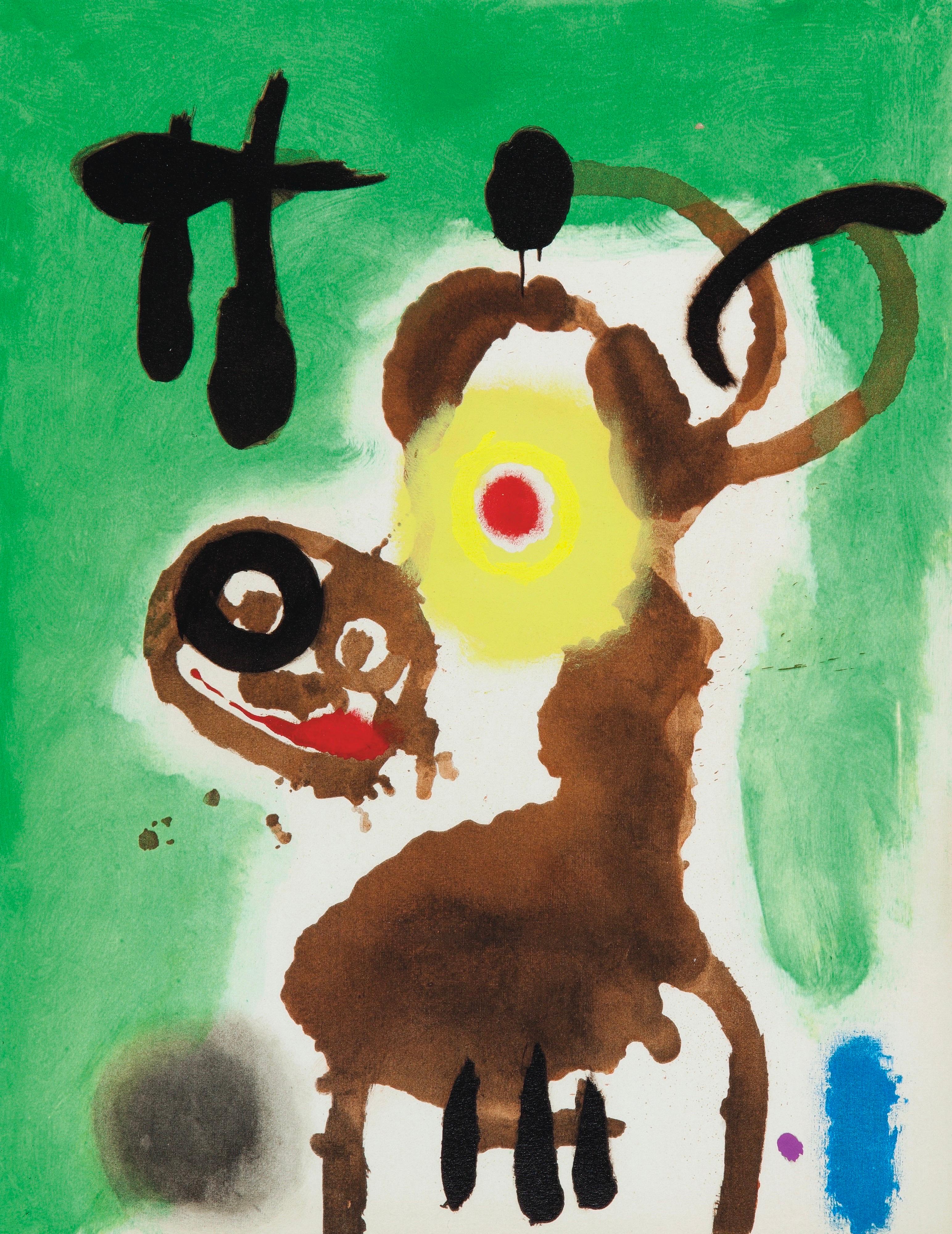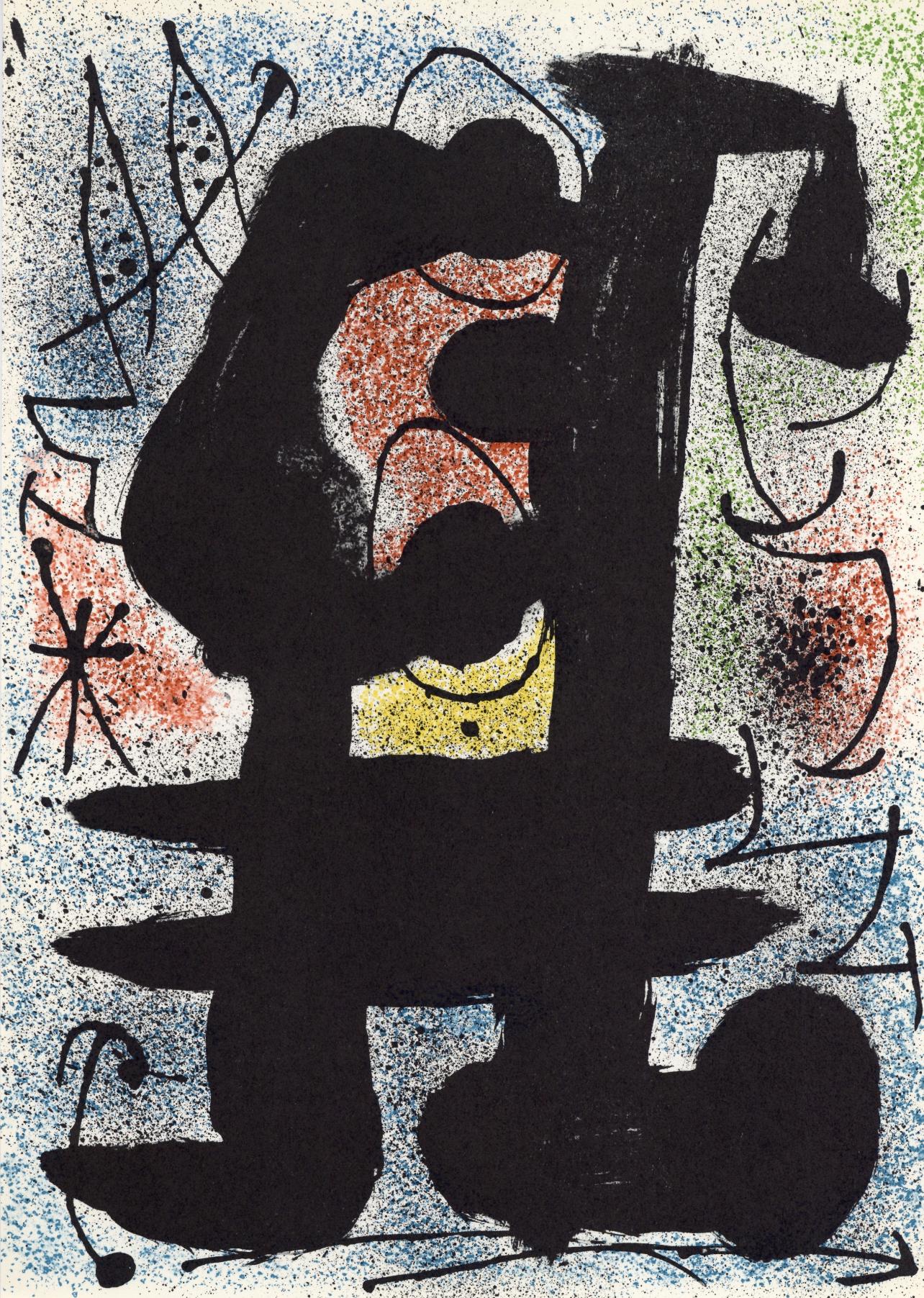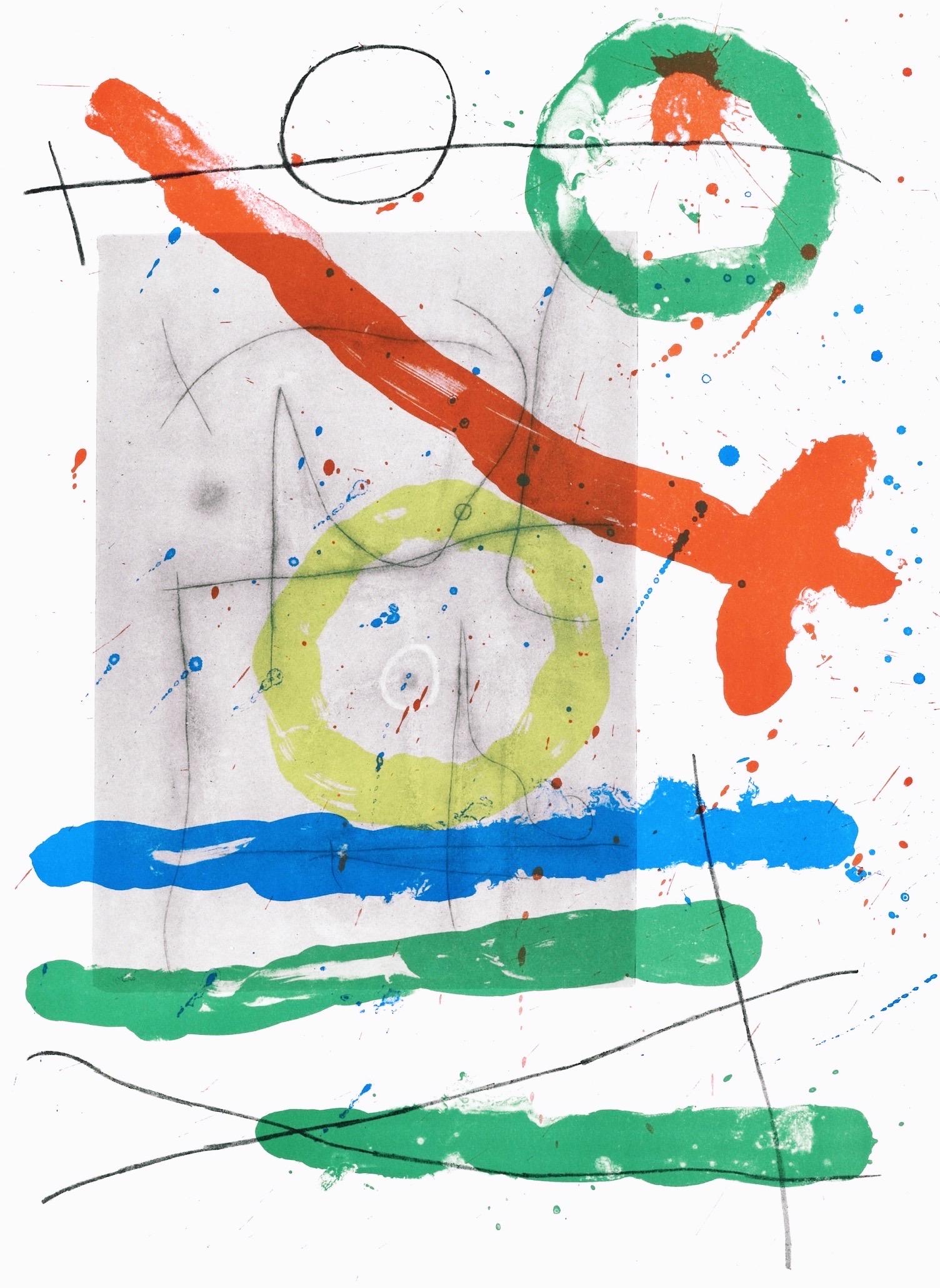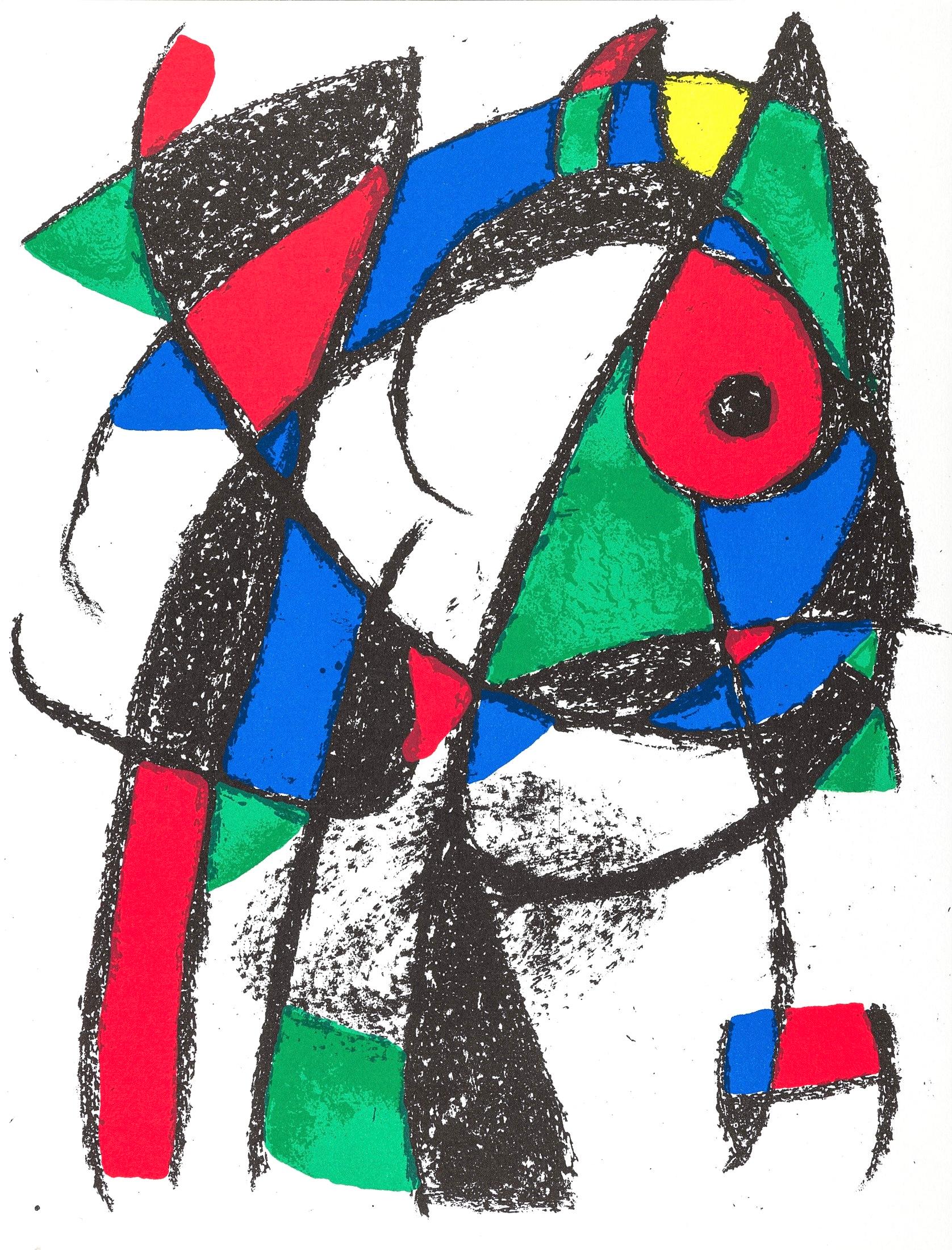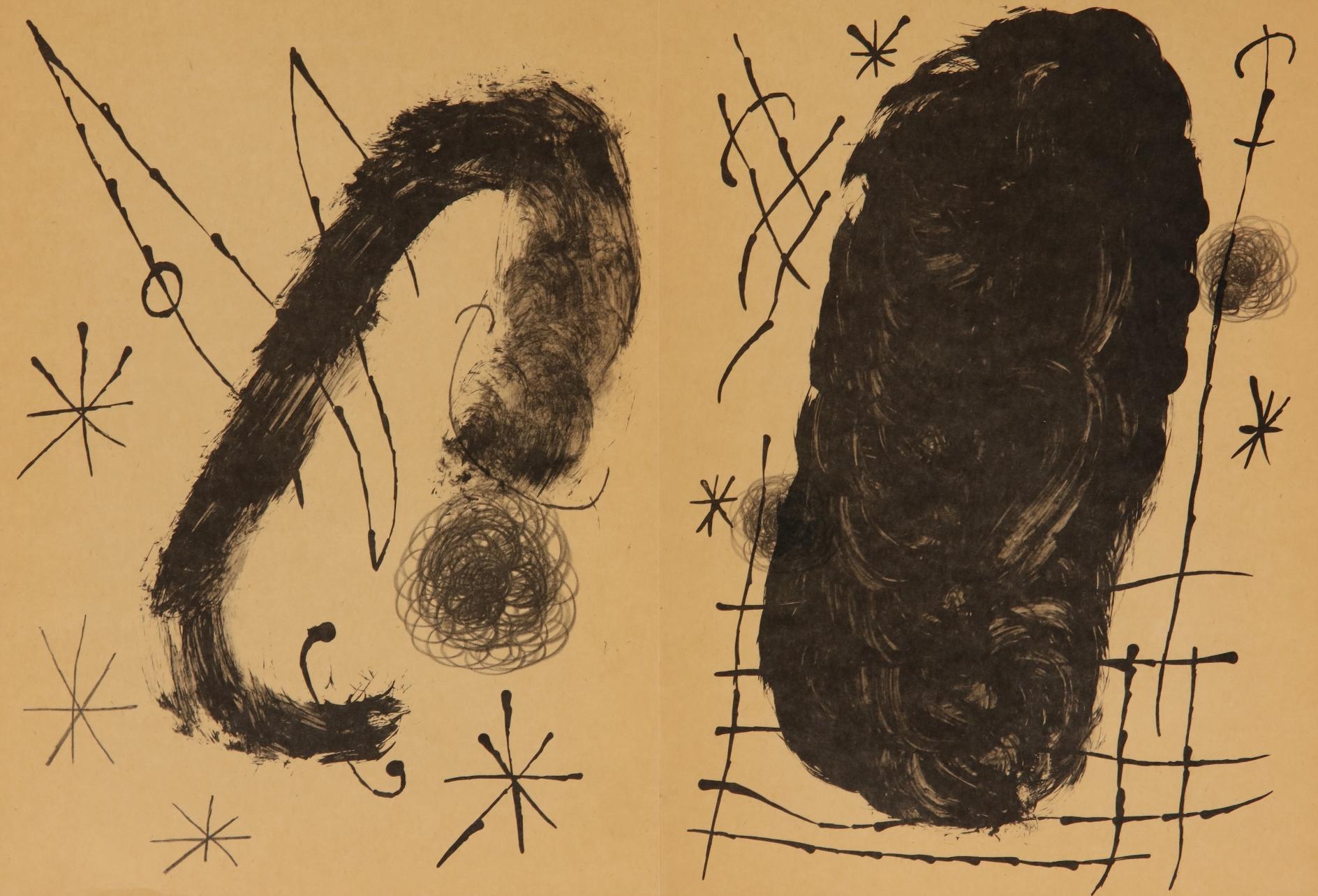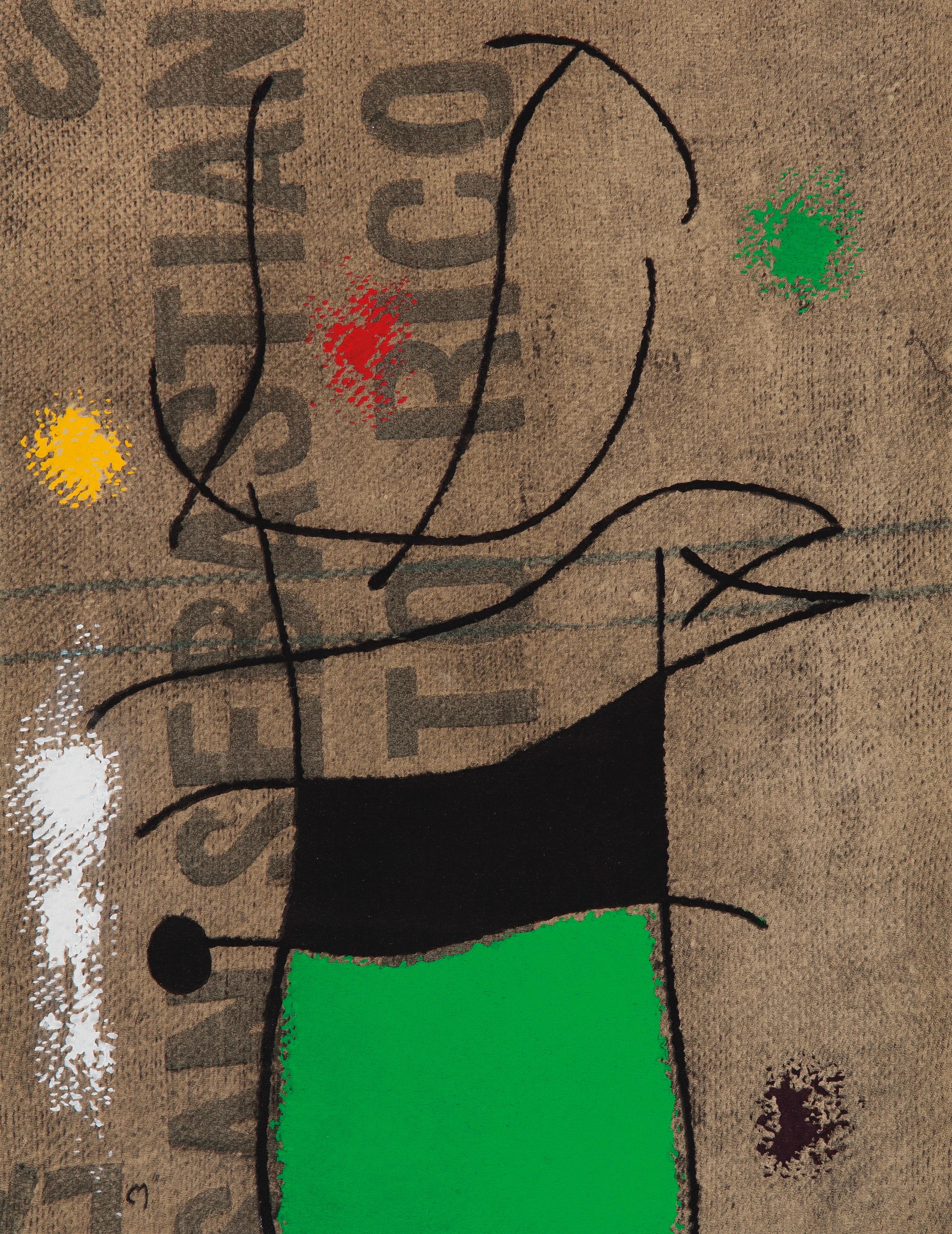Items Similar to Joan Miro, The Bather, from Miro 1959–1960, 1961 (after)
Want more images or videos?
Request additional images or videos from the seller
1 of 7
Joan Miro, The Bather, from Miro 1959–1960, 1961 (after)1961
1961
About the Item
This exquisite lithograph and pochoir after Joan Miro (1893–1983), titled La baigneuse (The Bather), from the album Miro 1959–1960 (Miro 1959–1960), originates from the 1961 edition published by Pierre Matisse Gallery, New York, rendered by Daniel Jacomet, Paris, and printed by Daniel Jacomet et Cie, Paris, 1961. La baigneuse captures Miro’s lyrical abstraction at its height, translating the theme of the bather into a poetic interplay of color, movement, and form. Through fluid biomorphic shapes and dynamic gesture, the composition evokes the harmony between the human body and the natural elements, imbuing the scene with the artist’s characteristic sense of freedom and dreamlike rhythm.
Executed as a lithograph and pochoir on velin paper, this work measures 11.5 x 9.24 inches. Unsigned and unnumbered as issued. The edition exemplifies the refined craftsmanship of Daniel Jacomet et Cie, Paris, one of France’s foremost studios specializing in pochoir and fine art printmaking.
Artwork Details:
Artist: After Joan Miro (1893–1983)
Title: La baigneuse (The Bather), from the album Miro 1959–1960 (Miro 1959–1960), 1961
Medium: Lithograph and pochoir on velin paper
Dimensions: 11.5 x 9.24 inches (29.2 x 23.5 cm)
Inscription: Unsigned and unnumbered as issued
Date: 1961
Publisher: Pierre Matisse Gallery, New York
Renderer: Daniel Jacomet, Paris
Printer: Daniel Jacomet et Cie, Paris
Catalogue raisonne references: Cramer, Patrick, and Joan Miro. Joan Miro, Catalogue Raisonne Des Livres Illustres. P. Cramer, 1989, illustration 69. Dupin, Jacques, and Joan Miro. Miro Engraver 1961–1973. Rizzoli, 1989, illustration 292. Miro, Joan. Joan Miro, Lithographe II, 1953–1963. Joan Miro, Lithographe, Maeght, 1975, illustration 286–294.
Condition: Well preserved, consistent with age and medium
Provenance: From the album Miro 1959–1960 (Miro 1959–1960), published by Pierre Matisse Gallery, New York; rendered by Daniel Jacomet, Paris; printed by Daniel Jacomet et Cie, Paris, 1961
Notes:
Excerpted from the album (translated from French), It was taken from this album: XXVIII examples with II original lithographs and an etching and VI suites, numbered from I to XXV; LXXX examples with II original lithographs and an etching, numbered from XXVI to LXXV; MCC examples, numbered from I to MCC. This album was made and presented for the exhibition of the artist's works at the Gallery Pierre Matisse, New York, October 31 - November 25, 1961.
About the Publication:
Miro 1959–1960 (Miro 1959–1960), published in 1961 by Pierre Matisse Gallery, New York, with pochoirs rendered by Daniel Jacomet, Paris, accompanied the landmark exhibition of Miro’s paintings and graphic works held at the Pierre Matisse Gallery from October 31 to November 25, 1961. The album captures the spirit of Miro’s late 1950s and early 1960s output—a period characterized by liberated brushwork, symbolic abstraction, and radiant chromatic experimentation. Printed by Daniel Jacomet et Cie, Paris, in collaboration with Fernand Mourlot for the original lithographs, the volume reflects the exceptional precision and artistry of French printmaking at its height. Designed to evoke the immediacy of Miro’s painted surfaces, the pochoirs and lithographs maintain a tactile richness and vibrancy that honor the original works. This publication stands among Miro’s most celebrated printed albums, marking a pivotal moment in his continued dialogue between materiality, imagination, and cosmic lyricism.
About the Artist:
Joan Miro (1893–1983) was a Catalan painter, sculptor, printmaker, and ceramicist whose visionary imagination and lyrical abstraction made him one of the most influential and beloved artists of the 20th century. Born in Barcelona, Miro drew inspiration from Catalan folk art, Romanesque frescoes, and the luminous landscapes of Mont-roig del Camp, developing a deep connection to nature that infused his work with vitality and symbolism. After formal training at the Escola d'Art in Barcelona, he absorbed the lessons of Post-Impressionism and Cubism before moving to Paris in the early 1920s, where he became a leading figure in the Surrealist movement. There, Miro forged a personal visual language of biomorphic shapes, floating symbols, and radiant color harmonies that reflected both spontaneity and spiritual depth. In creative dialogue with peers such as Alexander Calder, Alberto Giacometti, Salvador Dali, Wassily Kandinsky, Marcel Duchamp, and Man Ray, he helped revolutionize modern art by dissolving the boundaries between abstraction and dream imagery. Miro's inventive approach extended far beyond painting, embracing sculpture, ceramics, and monumental public commissions that redefined how art could interact with space and emotion. His expressive freedom and gestural abstraction profoundly influenced later artists including Jackson Pollock, Mark Rothko, Alexander Calder, Jean Dubuffet, Antoni Tapies, and Joan Mitchell, inspiring generations who sought to merge instinct, color, and imagination. Today, Miro's work remains a cornerstone of modernism, prized by collectors and celebrated in major museums worldwide. His highest auction record was achieved by Peinture (Etoile Bleue) (1927), which sold for 23,561,250 GBP (approximately 37 million USD) at Sotheby's, London, on June 19, 2012.
After Joan Miro La baigneuse, Miro 1959–1960, Miro Pierre Matisse Gallery, Miro Daniel Jacomet, Miro pochoir velin, Miro collectible print.
- Creation Year:1961
- Dimensions:Height: 11.5 in (29.21 cm)Width: 9.24 in (23.47 cm)
- Medium:
- Movement & Style:
- After:Joan Miró (1893 - 1983, Catalan)
- Period:
- Condition:
- Gallery Location:Southampton, NY
- Reference Number:1stDibs: LU1465216675102
About the Seller
4.9
Platinum Seller
Premium sellers with a 4.7+ rating and 24-hour response times
Established in 1978
1stDibs seller since 2021
1,221 sales on 1stDibs
Typical response time: <1 hour
- ShippingRetrieving quote...Shipping from: Southampton, NY
- Return Policy
